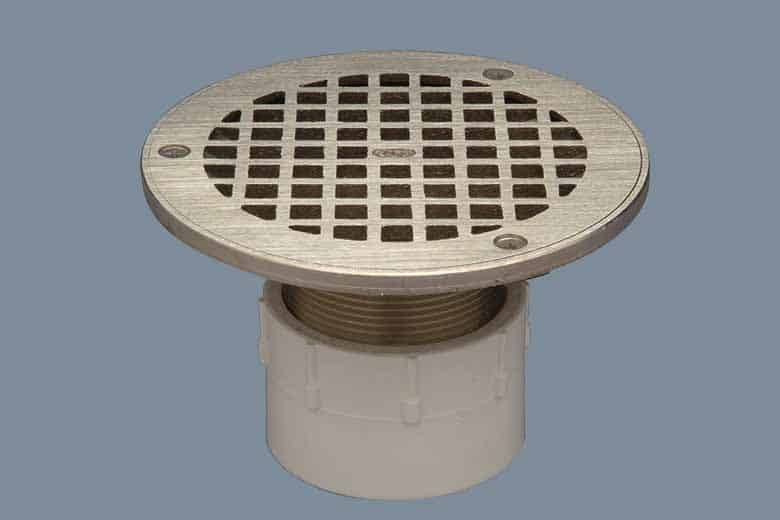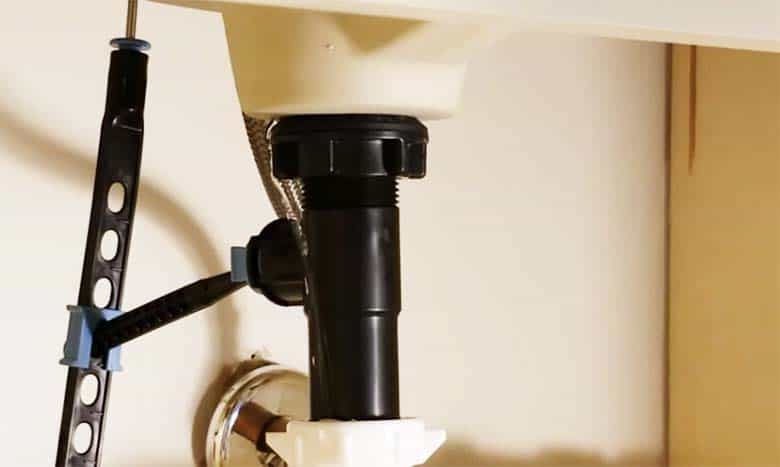Are you planning to turn your basement into a living space or remove dampness? Then, you need to know about the basement floor drain cover with a hose connection.
The basement floor drain connects with your city’s main drainage or sewage system and removes all wastages through it. However, you can’t just leave the floor drain open and let the sewage gas enter your home.
Thus, we suggest you cover the basement floor cover with cement or plugs. Also, you can connect a hose with it to drain your air-purifying or dehumidifying devices. You can easily install the cover on the drain floor. Also, you may secure the hose attachment through the drain cover with Teflon tape for better drainage.
Moreover, you can also detach the hose from the floor drain cover by removing the tape around it. Isn’t it amazing?
So, let’s jump into the deeper discussion of the hose connection with the basement floor drain for perfect home management.
Can You Cover a Floor Drain in the Basement?
Yes, you can easily cover the floor drain of your basement. You may cover it permanently or temporarily. For permanent cover and seal, you can use concrete or cement.
On the contrary, you may use metal or plastic caps for temporary covering. These lids are available in the local hardware store and don’t need any plumbing skills. You just need to fix it following the user guideline.
How to Attach Basement Floor Drain Cover with Hose Connection
You might need to connect the hose with your basement floor drain. For instance, you might need a hose attachment for draining the tank reservoir of the dehumidifier. Since the basement has extra humidity, most homeowners use a dehumidifier to control the moisture.
However, it has a tank reservoir that collects the condensed water from the moisture. You can connect the hose with the reservoir and floor drain cover to drain it directly. Also, it will help you maintain the basement floor better and drier without any dampness.
Steps to Connect the Hose with the Floor Drain:
You won’t find any drain floor cover with the hose attachment directly. You need to buy a hose separately and install it through the holes of the drain cover. For this, you may follow these steps. It includes:
- If your floor drain cover has holes, you can easily insert a hose through it. Usually, a garden hose with a ½-inch or 5/8-inch size will be ideal for inserting through it.
- Thus, you need to check the size of the holes in the floor drain cover. Then, you can pick the right size drain hose and insert it.
- You need to determine whether you want to connect the hose with the drain cover permanently or temporarily. We don’t recommend the performance hose attachment solution since it is impractical. You will have a hard time removing it.
- Thus, you should connect the hose with the floor drain cover temporarily. However, you need to secure it with Teflon or plumbing tape. It will prevent leakages around the hose and drain cover connecting points.
- Moreover, you should measure the length of the hose so that it reaches the floor drain from the point it will work in the basement. For instance, if your dehumidifier is 10 feet away from the draining point, the hose should be over 10 feet long. It will help you in attaching and maintaining it better.
An important note:
Moreover, you should note that you can also remove the floor drain cover and insert the hose directly through the drain. You can do it while sweeping and cleaning the basement or your automobiles. It is useful with better water flow since mounting a larger diameter hose through the drain cover hole can be tough.
Use of Metal Cutting Blade:
You may also cut through the drain cover for better attachment. Use a metal-cutting blade to cut through the drain cover carefully. Be attentive while cutting the drain cover to don’t damage the slab. Also, use chalk to mark the space you want to cut and follow the marked line. Once you have cut through a small segment of the drain cover, you can insert the hose through it. Finally, secure it with Teflon tape.
The above discussion may show that the hose connection with the floor drain cover is easy. But, for this, you need to understand different coverage options for the floor drain.
Different Options to Cover the Basement Floor Drain:
You can cover the drain of the basement floor temporarily or permanently. These options are:
Seal the Floor Drain:
Do you want to transform your basement into a finished and permanent living space? Then, you can seal it with cement or concrete permanently. It will stop sewage backflow and keep the floor in good condition for an extended period.
We recommend you use hydraulic cement for the best results. Hydraulic cement is used widely in masonry to stop leakage. Also, you can keep ½ to 5/8 inches of a hole in the seal cover of the drain to insert the hose through it.
Use a Cap or Lid:
The lid or cap attachment is the best way to cover the basement drain temporarily. Since the lid or cap is removable, you can easily unblock the drain whenever needed. Also, these caps are available in both plastic and metal versions. You should choose metal caps to cover the floor cover since it is a sturdy solution. Also, you may cut through it to connect the hose with the drain directly and remove water from the basement.
It also works great with the dehumidifier to drain its tank reservoir without removing it from the machine. It will ease out your dehumidifier and basement maintenance. Moreover, these caps for covering the floor drain have three different options.
- Pressure plugs: The pressure plug is similar to the bathtub plug. It tapers from the plugs’ larger diameter to the narrow diameter. You have to stick the narrower diameter of the plug into the floor drain.
- Next are the twist plugs. It has a rubber flange, while the cap is made of either metal or plastic. You need to insert it within the drain pipe. Then, tighten it using the wing nut. It makes the drain seal water and airtight.
- Finally, there is the twist ball. It has a rubber bulbous, and you need to insert it through the drainpipe. So, you may cover the floor drain with ease. Also, it offers a nice and pretty easy sealing without much effort.
Threaded Cover:
Modern-day homes use PVC pipes even for the drain. You can seal the drain cover with the threaded plug if you have such a setup. Due to backflows, it won’t pop out, so it is a better option.
Benefits of Using Hose Connection with The Basement Floor Drain Cover:
A basement floor drain with hose attachment comes with multiple benefits in real life. At one point, it helps you maintain the basement. On the other hand, you can keep the basement clean using the floor drain cover. Some of its key benefits include:
- The hose connection will allow you to clean the basement occasionally. So, you may remove dirt and grime from the basement with ease.
- Also, it helps you in connecting the dehumidifier to drain its tank reservoir.
- Connecting a hose through the drain cover allows you to unblock the drainpipe through the hose.
- You can run water through the hose at high speed. It will allow you to unclog the drainpipe quickly, even without removing the cover. Also, the hose attachment is easy to remove. So, you can remove it whenever required.
As you see, connecting a hose through the floor drain cover of the basement will help you maintain the property perfectly. It increases your property value too.
FAQ:
What is my basement floor drain connected to?
The basement floor drain is connected to the main sewage system of your city. It drains everything into the swage line and keeps your home neat and clean. So, it removes rainwater, HVAC condensation, and leaks from the water heater.
Is the basement floor drain connected to the sanitary sewer?
Yes, in most homes, the basement floor drain will be linked with the sanitary sewer. But, at times, it is connected with the pit sump. From there, it runs into the swage and sanitary line.
How Can I hide a floor drain in the basement?
You can seal the basement floor drain with a metal or plastic lid. These caps or lids have a narrower and wider end. You need to fix it accordingly and secure the drain with ease.
Conclusion:
The basement floor drain cover with a hose connection is a pretty smart idea. It will help you maintain the basement floor quickly. So, attach the hose with the drain cover and enjoy the added convenience. You will love the hose connection advantages for sure.
I am James Martin, An professional plumber with more than 16 years of experience. The main purpose of my writing is to share my experiences of helping others. Be with me and explore bathroom plumbing, installation, cleanness ideas, and many more.




